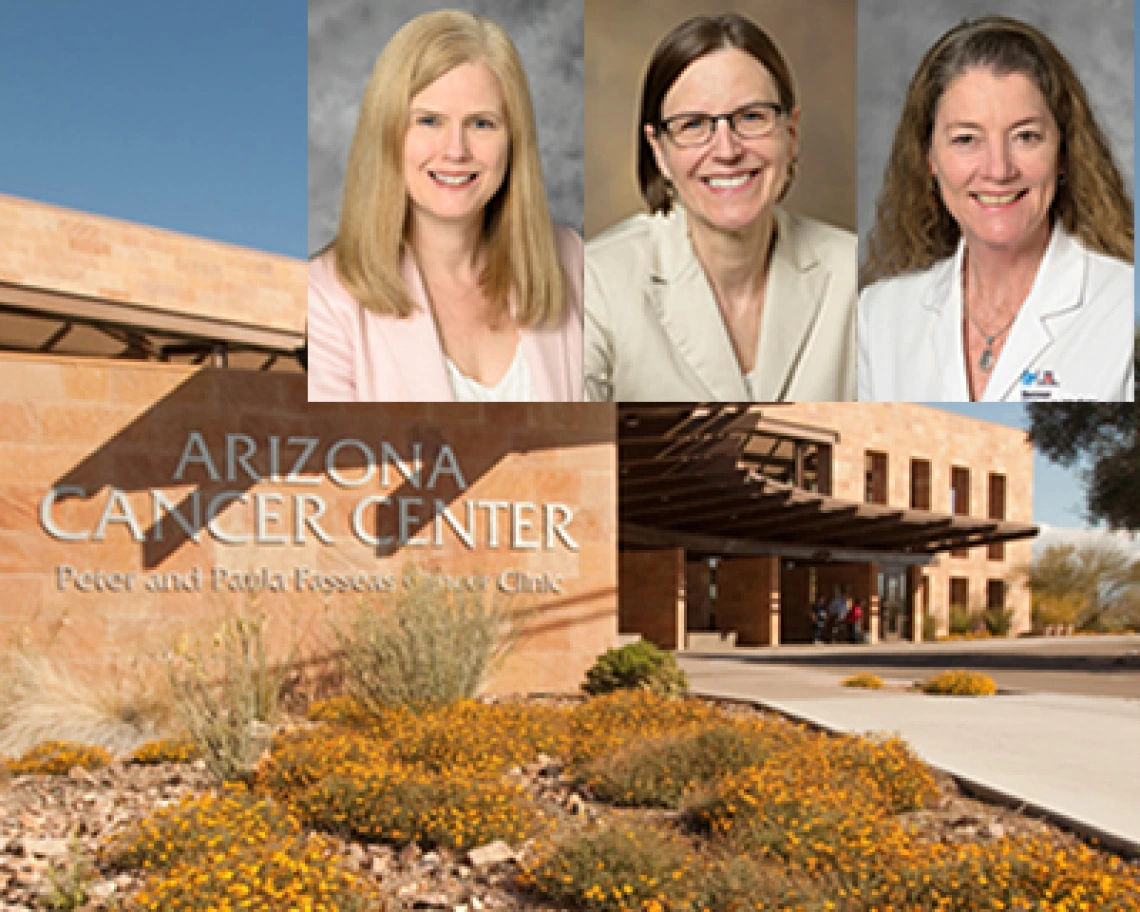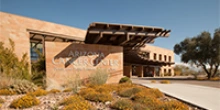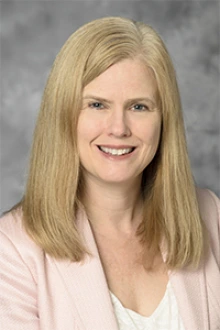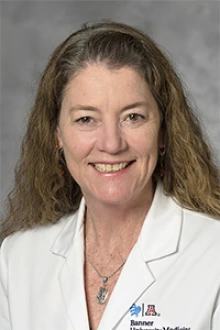New Safeguards and Procedures Allow Cancer Care, Research to Continue During COVID-19 Pandemic
UArizona Cancer Center, Banner – University Medicine continue state-of-the-art cancer care and cutting-edge clinical research during COVID-19 pandemic since “Cancer doesn’t sleep, so neither can we.”

TUCSON, Ariz. – When the COVID-19 pandemic began to spread closer to home, leaders at the University of Arizona Cancer Center and its clinical partner Banner – University Medicine had two critical questions to answer quickly.

The UArizona Cancer Center’s Peter and Paula Fasseas Cancer Clinic at Banner – University Medicine North
“Cancer doesn’t sleep, so neither can we,” said Julie E. Bauman, MD, UArizona Cancer Center deputy director, professor in the Department of Medicine at the UArizona College of Medicine – Tucson, and chief of the Division of Hematology and Oncology at the college and Banner – University Medicine Tucson. “We've been working for nearly two months to create and maintain a ‘bubble’ around the cancer center so that world-class cancer care and research can continue. That is crucial because we don’t know how long this pandemic will last.”
To safely continue essential cancer care, including cutting-edge clinical research, Dr. Bauman and her colleagues established new measures and protocols to create the bubble around the Cancer Center.

Joann Sweasy, PhD, UArizona Cancer Center interim director
“The No. 1 priority was to minimize COVID-19 in our center,” said Michael Frithsen, MBA, oncology services division administrator at Banner – University Medical Center Tucson. “That was the basis for everything that we've implemented to keep our patients and staff safe.”
Dr. Bauman agreed, “We know we can’t hold COVID-19 exposure to zero due to community spread, but we are doing everything in our power to be as close to zero as possible.”
Keeping COVID-19 out of the clinic begins with a comprehensive screening process for all individuals prior to entering the building, including patients, staff and clinicians. Screening includes body temperature checks and a series of questions for symptoms or contacts associated with COVID-19, said Sandra Kurtin, PhD, the COVID-19 onsite captain. An on-site drive-through testing process was developed for patients failing the screening process that includes medical evaluation and testing for COVID-19. In addition, a process for triaging patients who require essential treatments and are under investigation for COVID-19 was developed using a limited-exposure process to protect patients, clinicians and staff.

Julie E. Bauman, MD, MPH, UArizona Cancer Center deputy director
The next critical step was to ensure health-care providers remained healthy and had minimal exposure threat to COVID-19. In response, Dr. Bauman recommended a rotating-staff model, comprised of two teams. The field-based “Team A” members would work for 14 days in the clinic and hospital – critical environments with risk of exposure that have to be protected. Meanwhile, the home-based “Team B” staff would self-quarantine for 14 days and conduct telemedicine services. The 14-day absence, which aligns with the U.S. Centers for Disease Control and Prevention quarantine and active-monitoring period for the virus, makes available a healthy and able reserve staff to take over clinical care.
Another measure quickly implemented to maintain a safe clinical setting was to transition some patients to telemedicine rather than in-person visits. In fact, all visits that do not require physical presence in the building have moved to telemedicine. Two forms of telemedicine are common, including a traditional telephone call or a telehealth visit that can include a video component for face-to-face interaction through digital platforms.
Similar to clinical care, essential cancer research is ongoing with clinical trials continuing to accrue patients, especially trials offering new treatments unavailable elsewhere in Arizona. Researchers also prioritized essential Cancer Center laboratory projects and implemented safeguards so that scientific discoveries to defeat cancer continue without interruption. This includes social-distancing measures in laboratories and enabling researchers to work together on novel team-science research projects through telephone and Zoom meetings.

Sandra Kurtin, PhD, the center’s COVID-19 onsite captain, director of advanced practice and clinical integration, and a nurse practitioner
Throughout the implementation of the new policies and procedures, leadership at the Cancer Center and Banner – University Medicine were in constant communication. Multiple daily meetings were scheduled to discuss provider capacity, supplies, such as like personal protective equipment and swabs, and other essential needs to meet the demand of newly created protocols.
“We were able to learn from other centers around the nation and the world to get processes in place before a surge in our community,” Dr. Bauman said. “The steps we took allowed us, the best we could, to get ahead of the curve while our community had a lower prevalence so we could continue providing state-of-the-art cancer care.”
For more on this story, please click here.
The UArizona Health Sciences COVID-19 Resources webpage can be found here.
Banner – University Medicine and Banner Health’s COVID-19 patient resources are at this link.
For the latest on the University of Arizona response to the novel coronavirus, visit the
university's COVID-19 webpage.
NOTE: Photos available here – https://arizona.box.com/s/k07buoj9zy36aspgoepz6zhw3fymw1eu
About the University of Arizona Cancer Center
The University of Arizona Cancer Center is the only National Cancer Institute-designated Comprehensive Cancer Center with headquarters in Arizona. The UArizona Cancer Center is supported by NCI Cancer Center Support Grant No. CA023074. With primary locations at the University of Arizona in Tucson and at Dignity Health St. Joseph’s Hospital and Medical Center in Phoenix, the Arizona Cancer Center has more than a dozen research and education offices throughout the state, with more than 300 physicians and scientists working together to prevent and cure cancer. For more information: cancercenter.arizona.edu (Follow us: YouTube).
About Banner – University Medical Center Tucson and South
Banner – University Medical Center Tucson and Banner – University Medical Center South are part of Banner – University Medicine, a premier academic medical network. These institutions are academic medical centers for the University of Arizona College of Medicine – Tucson. Included on the two campuses are Diamond Children's Medical Center and many specialty clinics. The two academic medical centers are part of Arizona-based Banner Health, one of the largest nonprofit health care systems in the country. Banner Health is in six states: Arizona, California, Colorado, Nebraska, Nevada and Wyoming. For more information, visit BannerHealth.com/UniversityTucson or BannerHealth.com/UniversitySouth (Follow us on Facebook: @BannerUniversityMedicalCenterTucson or @BannerUniversityMedicalCenterSouth).

